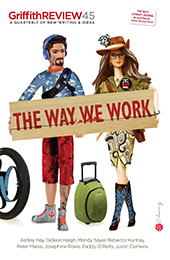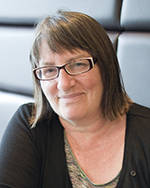Featured in

- Published 20140805
- ISBN: 9781922182425
- Extent: 264 pp
- Paperback (234 x 153mm), eBook
I STARTED TEACHING in 1974 in suburban Melbourne. I had a class of twenty-eight grade two children whose average age was seven-and-a-half. From February to December, for five days a week, I taught them reading, writing and mathematics in the morning, and everything else in the afternoon. Regardless of my lack of experience, the children learnt all of this – some with more facility than others. Learning difficulties had yet to be categorised: terms such as dyslexia, dyscalculia or dysgraphia would come later. Children with behavioural problems were not diagnosed with ADHD, conduct disorder or any personality disorders. There were no experts or teacher aides available to help in the classroom in those days. There were, however, mothers who came in to hear the children read. These were the same mothers who helped out on school excursions, craft days and multicultural food days. ‘Working with Children’ certificates were an idea for the next century, and toddlers were welcome.
This year I have an evening class of adult students whose average age is forty-two. Most of them work full-time and come to class after work. They are enrolled in a Diploma of Professional Writing, which is an accredited TAFE course comprised of a collection of units of competency. The complete Diploma costs approximately $10,000. My class runs for two hours on a Wednesday evening, for seventeen weeks. I am paid for the two hours of face-to-face class time.
While teachers are primarily sessional in the Victorian VET (vocational education and training) sector, we do have ongoing permanent support staff to provide help to students with learning difficulties, study skills and other personal problems. We all have ‘Working with Children’ certificates, even though the students are all adults.
IN 1974 I kept a work program detailing what I was teaching each week. This was an A4 folder with lined pages that I ruled up into a weekly grid. The days of the week ran across the top of the double page. The left-hand column listed the subjects I taught: language, mathematics, science, social studies, physical education, sport, art and music. This work program was written in consultation with the other grade two teachers, then signed off by the Infant Mistress, a fearsome woman who occupied an office down the corridor.
There were no electronic records – the personal computer had yet to be invented. The only record I left behind at the end of that year was the work program and the roll, both written in biro – a true record of all the children who attended each morning and afternoon, and what they did in the classroom that year. These are possibly still stored somewhere in the archives of the Ministry of Education.
Now, in 2014, I keep numerous records for auditing purposes. These include various mapping forms, which match the content of each class and the assessment tasks with the units the students are enrolled in. Each unit comprises several elements and sub elements as well as numerous employability skills. There is no mention of the course content in the curriculum document because the teacher, who still has expertise in their teaching area, supplies the content. These mapping forms have to be kept electronically as well as on paper, and are updated yearly or when the template for the form changes (which is often). The roll is still marked on paper, but also electronically.
I still keep an A4 folder, however, which I have ruled up in red biro. That’s where I write the class-to-class program, with one A4 page for each two-hour class. This will come home with me when this course ends, but the official mapping documents will remain forever in a digital archive, doomed to be inaccessible when the technology changes.
IN 1974 WE made our own teaching aids using paper, card, coloured markers and contact. Every teacher had a collection of flashcards, worksheets, maths games, dioramas, costumes and pictures. We all had a talent for beautiful blackboard writing and extensive use of coloured chalk. The classroom was furnished with a cupboard, table and chair for the teacher; desks for the children; a blackboard across the front wall (with chalk and dusters); a ledge for displaying books with cupboards underneath; a ragged carpet in front of the blackboard for the children to sit on; windows along one side of the room; and pin-boards along the other side and across the back. The cupboards contained teaching essentials: coloured paper, clag, scissors, crayons, coloured pencils, industrial-strength red and blue pencils, containers of coloured plastic squares, and bottle tops and boxes of Cuisenaire rods (with some missing). There were also a couple of vases for the flowers that children always bought for the teacher, and a brush and shovel for all those daily messes.
The children did their learning during the day at school, and took their readers home to read to their parents (usually the mother) in the afternoon.
Now, in 2014, I send my class a weekly email about what they should research, read and write during the week. There will be a particular discussion topic to consider for the next class. The two-hour class becomes a discussion group for what the students have done during the week, and a workshopping session for excerpts from their novels. My simple email is no longer considered good enough. The Institution would like all class materials, assessment tasks and communications to be posted onto the student web.
Our classroom is furnished with tables and chairs, a computer, an interactive whiteboard and data projector and a television. There is a small whiteboard, but these are on their way out like endangered frogs in a hot pond. There is no particular desk or computer for the teacher either in the classroom or in the office. There may be a pigeonhole and a hot-desk, but as teachers are now usually employed on a sessional basis they do all their preparation and marking at home on their own desk, computer, printer, paper, internet access, and electricity.
I GRADUATED IN 1973 with a three-year Diploma of Education from Ballarat Teachers College. This later became State College of Victoria at Ballarat, which later again was absorbed by Ballarat University, which is now part of Federation University. While the institution has changed location once and letterhead several times, the qualification still stands. At the time there were six government-run institutions in Victoria where you could train as a primary school teacher.
I was paid to do this course by the Victorian state government. I had a studentship worth $25 per week. At the time, I paid $8 per week rent in a share-house and $3 per week for food. In exchange we were bonded to the government to teach for three years. We had a free education followed by secure ongoing employment.
After some published writing, that vintage Dip Ed qualified me to teach writing to adults, but not for long. The qualification that allows me to teach adults in the Victorian VET sector is the Certificate IV in Training and Assessment. Unlike my original three-year Dip Ed, this qualification can be completed in a few weeks and has a life span of five years and then needs to be updated. I have updated mine three times already. This course is offered by numerous providers, both public and private, with 11,400 results on Google.
I’ve been teaching adults in the VET sector for twenty years, and in that time classes that used to be taught over two semesters are now taught in one. Content is delivered via other means: in printed notes, online, on the student web, through independent research – or perhaps not delivered at all, as students can apply for recognition of prior learning.
As face-to-face time is reduced so is the requirement for teachers and classrooms. There are very few teachers left in staffrooms and offices in institutions that provide education. The space has been taken over by management and administration personnel.
Students are now called ‘learners’ and teachers are now called ‘facilitators’. Soon we won’t need teachers to have any content knowledge or teaching expertise. The content is all online and accessible to anyone. Just enroll in a free MOOC (massive open online course). If you want a qualification, apply to be assessed only, no teaching or teachers or classrooms required.
TOWARDS THE END of the year in 1974, the children would get quite excited about Christmas. We collected foil bottle tops from milk bottles to convert into Christmas bells for decorating the classroom. The last of the year’s supply of coloured paper squares were used for Christmas lanterns and chains.
Those invaluable reading mothers produced a feast of Christmas party food for the last day of the year. The twenty-eight children, whose average age was now eight-and-a-quarter, brought gifts for me: chocolate coconut truffles they had made at home, jars of jam made from their back yard trees, soap, candles, maybe some re-gifted perfume. At the end of the last day I handed out their reports. I had written them at home in careful cursive script, all on one page each. They included a mark out of ten for each subject and a helpful and encouraging paragraph at the bottom of the page. There had been neither formal testing nor any national testing.
Now, in 2014, the last couple of weeks are a flurry of marking and recording the results on time. It is not just a matter of writing 8/10 in a column in the roll any more. Students can receive a variety of marks now, either converted to number codes (20, 30, 40, 51, 60) or possibly letter codes (C, NYC, ZZ, WB, WA, CT, etc.). This varies across institutions, so students need a code breaker to know how well they’ve done. Once the mark is in the roll, it has to be transferred into electronic form by a team of data entry staff, with the addition of random mistakes. The record needs to be checked again of course, by the teacher or the coordinator, to find some of those mistakes and perhaps add others. Then back for more data entry. Students will receive an electronic printout of their results…eventually.
Teachers are very unlikely to receive gifts from adult students, but if they do, such gifts become the property of the Institution. Invariably they turn up in a raffle for the management and general staff at the end-of-year do.
The sessional teachers won’t be there, because their contracts will have finished by then. They will be in a queue at Centrelink.
Share article
About the author

Rachel Flynn
Rachel Flynn started teaching in 1974 and has continued all through the evolution of technology, documentation, auditing requirements and classroom practice.She has published numerous picture...
More from this edition

Two men and a picture palace
EssayMANY MOONS AGO, before editing books was a glimmer at the end of my nib, I worked as an usher at Hoyts Midcity Cinemas...

More than a job
IntroductionAUSTRALIA WAS ONCE known as the land of the long weekend. It was a snappy catchphrase that, like all the best clichés, embodied enough...

Working for (bare) life
EssayIT IS GETTING dark as we approach the Cameron Highlands, about two hundred kilometres north of and a three-hour drive from Kuala Lumpur in...